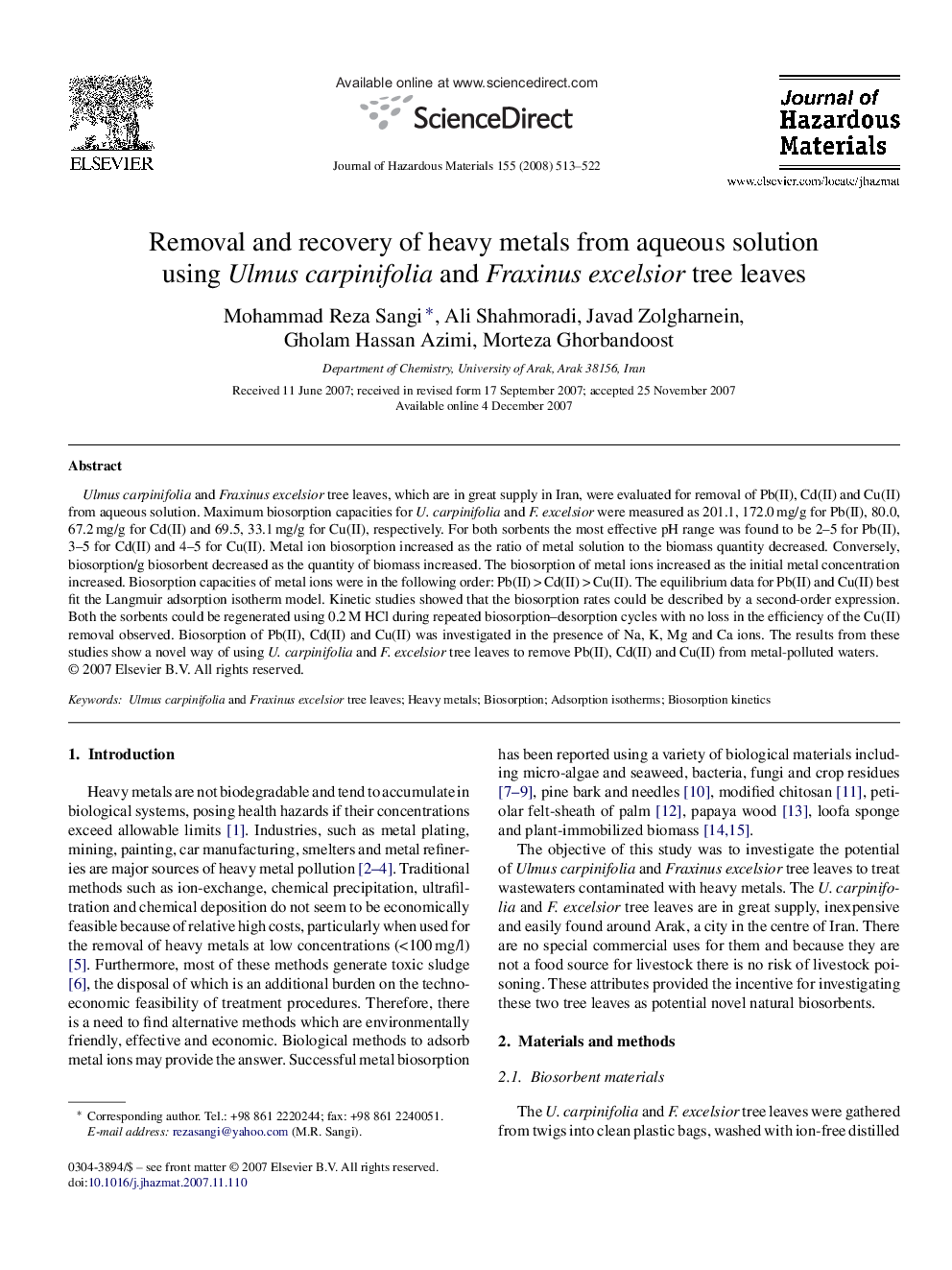| Article ID | Journal | Published Year | Pages | File Type |
|---|---|---|---|---|
| 583190 | Journal of Hazardous Materials | 2008 | 10 Pages |
Abstract
Ulmus carpinifolia and Fraxinus excelsior tree leaves, which are in great supply in Iran, were evaluated for removal of Pb(II), Cd(II) and Cu(II) from aqueous solution. Maximum biosorption capacities for U. carpinifolia and F. excelsior were measured as 201.1, 172.0Â mg/g for Pb(II), 80.0, 67.2Â mg/g for Cd(II) and 69.5, 33.1Â mg/g for Cu(II), respectively. For both sorbents the most effective pH range was found to be 2-5 for Pb(II), 3-5 for Cd(II) and 4-5 for Cu(II). Metal ion biosorption increased as the ratio of metal solution to the biomass quantity decreased. Conversely, biosorption/g biosorbent decreased as the quantity of biomass increased. The biosorption of metal ions increased as the initial metal concentration increased. Biosorption capacities of metal ions were in the following order: Pb(II)Â >Â Cd(II)Â >Â Cu(II). The equilibrium data for Pb(II) and Cu(II) best fit the Langmuir adsorption isotherm model. Kinetic studies showed that the biosorption rates could be described by a second-order expression. Both the sorbents could be regenerated using 0.2Â M HCl during repeated biosorption-desorption cycles with no loss in the efficiency of the Cu(II) removal observed. Biosorption of Pb(II), Cd(II) and Cu(II) was investigated in the presence of Na, K, Mg and Ca ions. The results from these studies show a novel way of using U. carpinifolia and F. excelsior tree leaves to remove Pb(II), Cd(II) and Cu(II) from metal-polluted waters.
Related Topics
Physical Sciences and Engineering
Chemical Engineering
Chemical Health and Safety
Authors
Mohammad Reza Sangi, Ali Shahmoradi, Javad Zolgharnein, Gholam Hassan Azimi, Morteza Ghorbandoost,
